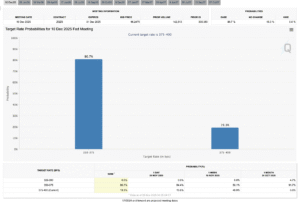Navigating Bitcoin’s Volatility with Elliott Wave Theory
Elliott Wave Theory is an advanced technical analysis tool that helps traders understand market psychology and price trends, especially in notoriously volatile assets like Bitcoin. This theory, developed by Ralph Nelson Elliott in the 1930s, posits that market movements follow a predictable pattern of waves that reflect collective investor behavior. By applying this framework, traders can gain insights into potential price movements and make more informed decisions.
Understanding the Basics of Elliott Wave Theory
At its core, Elliott Wave Theory is based on the idea that market prices move in repetitive cycles, driven by market psychology. These cycles consist of a series of waves: five waves in the direction of the trend (impulse waves) followed by three corrective waves. The five-wave pattern is often denoted as 1-2-3-4-5, while the corrective waves are labeled A-B-C. For Bitcoin, identifying these waves can provide traders with significant insights into when to enter or exit positions, establishing a clearer picture of the market’s overall trend.
The Application of Elliott Wave in Bitcoin Trading
To effectively use Elliott Wave Theory in analyzing Bitcoin price movements, traders must first identify the current wave structure. This involves recognizing the peaks and troughs of Bitcoin’s price chart, determining whether they form a complete sequence of impulse and corrective waves. Traders often use historical data and charting techniques to observe these patterns, which can help them forecast future price movements. Furthermore, understanding the psychology behind each wave can assist traders in anticipating market corrections and rallies.
Tools to Complement Elliott Wave Analysis
While Elliott Wave Theory provides a robust framework, combining it with other technical analysis tools can enhance its effectiveness. Oscillators, moving averages, and Fibonacci retracement levels are essential complements in analyzing Bitcoin’s price trends. Oscillators can help identify overbought or oversold conditions, while moving averages can smooth out price fluctuations to reveal the underlying trend. Fibonacci levels can be used to identify potential support and resistance areas, enhancing the overall analysis provided by Elliott Waves.
Challenges and Limitations of Using Elliott Wave Theory
Despite its advantages, using Elliott Wave Theory also comes with challenges. The interpretation of wave patterns can be subjective, especially in volatile markets like Bitcoin. Different traders might classify the same price movements differently, leading to varied conclusions. Additionally, the fast-paced nature of cryptocurrency markets can make it difficult to accurately pinpoint wave structures before they change. To mitigate these risks, traders should adopt a disciplined approach, use stop-loss orders, and continuously refine their analysis based on market dynamics.
Case Studies of Elliott Wave Analysis in Bitcoin Market
Several historical case studies illustrate the successful application of Elliott Wave Theory in Bitcoin trading. For instance, during Bitcoin’s rise from $3,000 to $20,000 in late 2017, traders who correctly identified the five-wave structure were able to capitalize significantly on the bullish trend. Conversely, those who misunderstood the wave patterns faced considerable losses during subsequent corrections. Examining these instances enables traders to learn from past behavior and improve their analytical skills in assessing future market cycles.
Conclusion: Mastering Elliott Wave Theory for Bitcoin Trading
In summary, Elliott Wave Theory offers a comprehensive approach to analyzing Bitcoin’s price volatility. By understanding the wave patterns, complementing the analysis with other technical tools, and recognizing the limitations of the theory, traders can develop a nuanced trading strategy. As the cryptocurrency market continues to evolve, leveraging Elliott Wave Theory can empower traders to make informed decisions and potentially enhance their profitability. Thus, mastering this technique can be a valuable asset for anyone looking to navigate the complexities of Bitcoin trading effectively.















